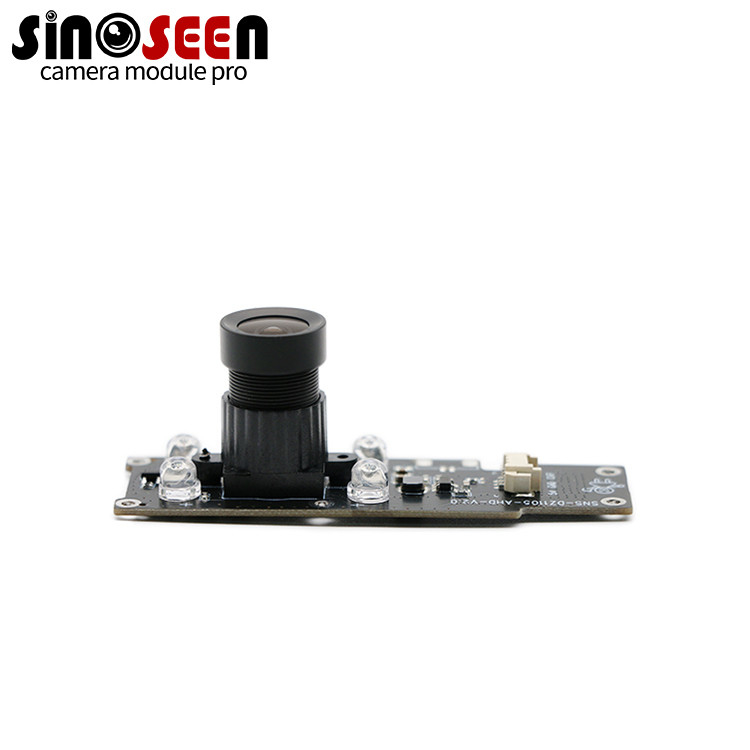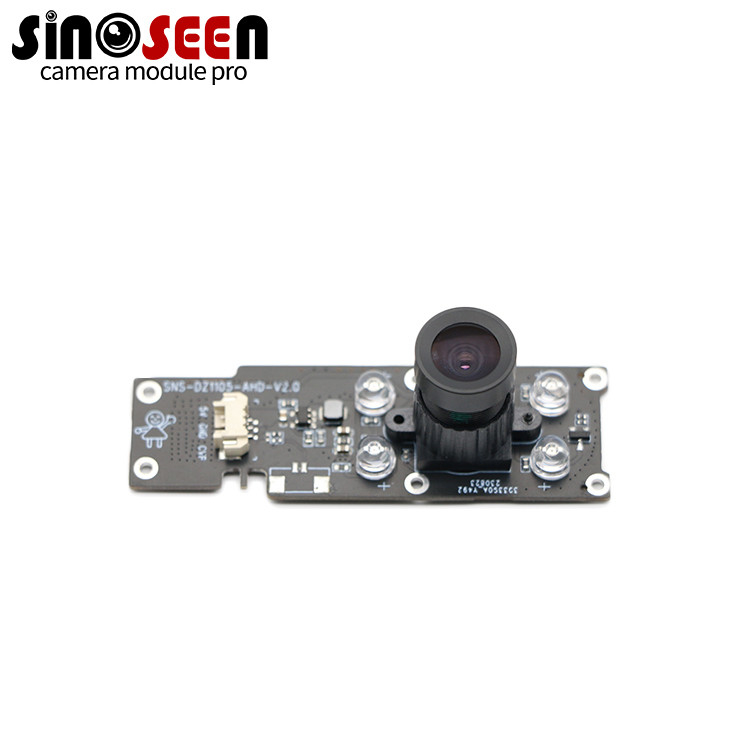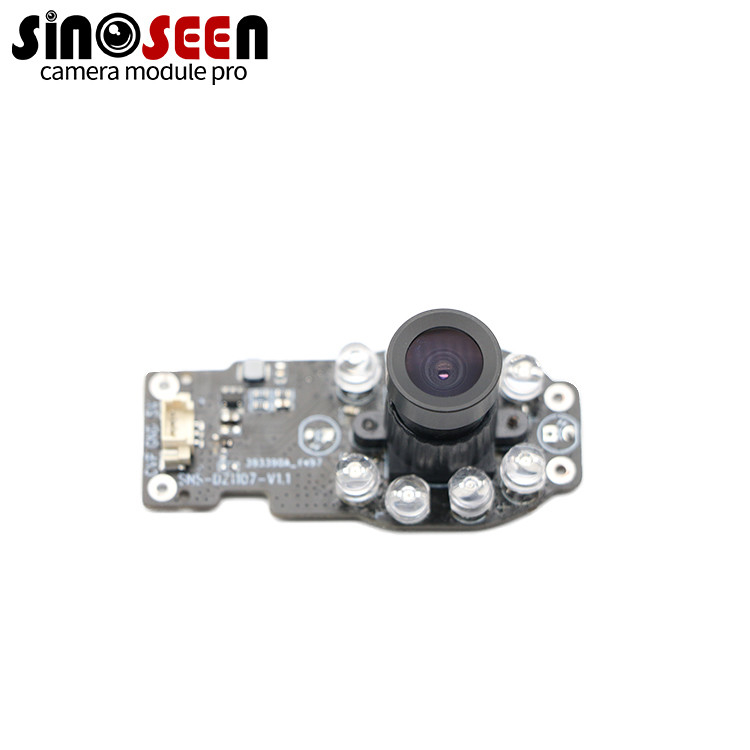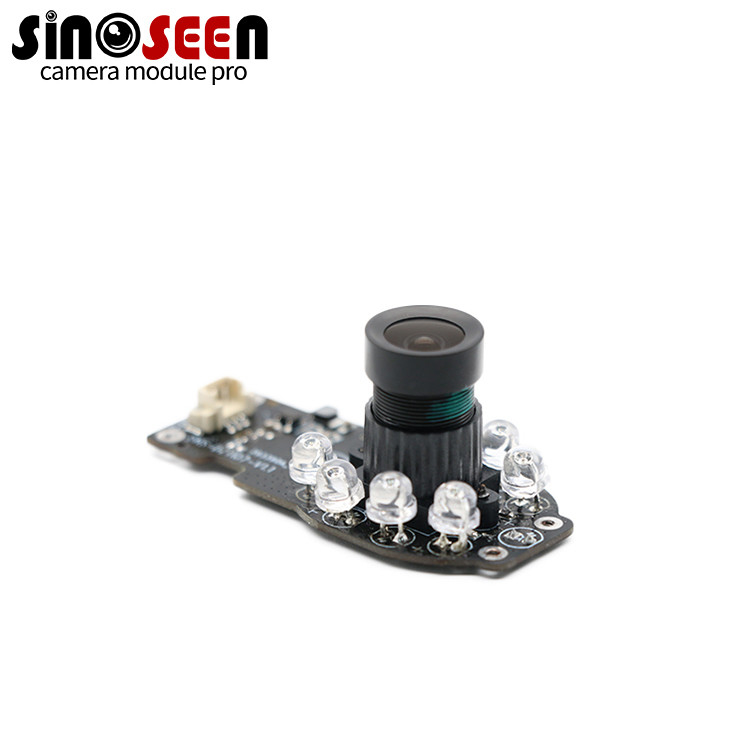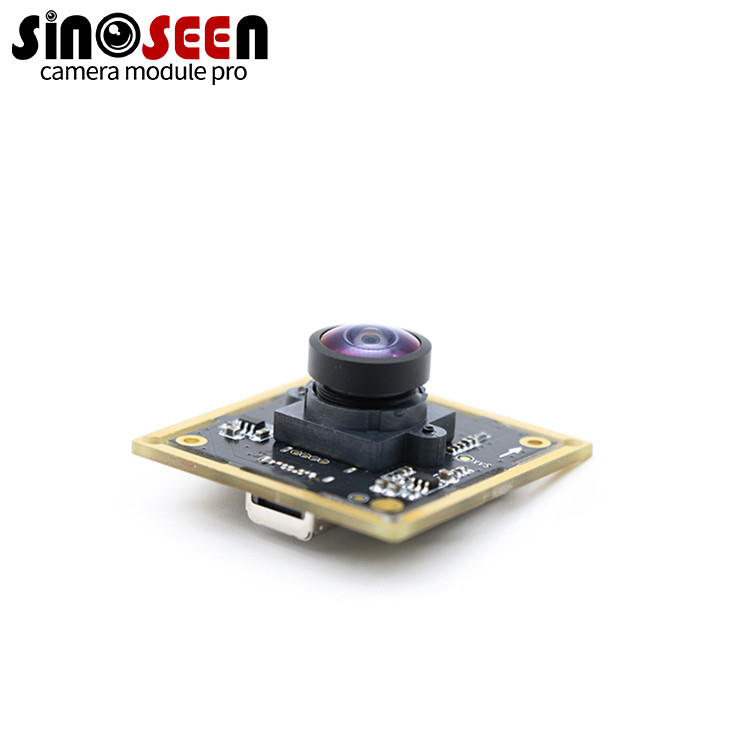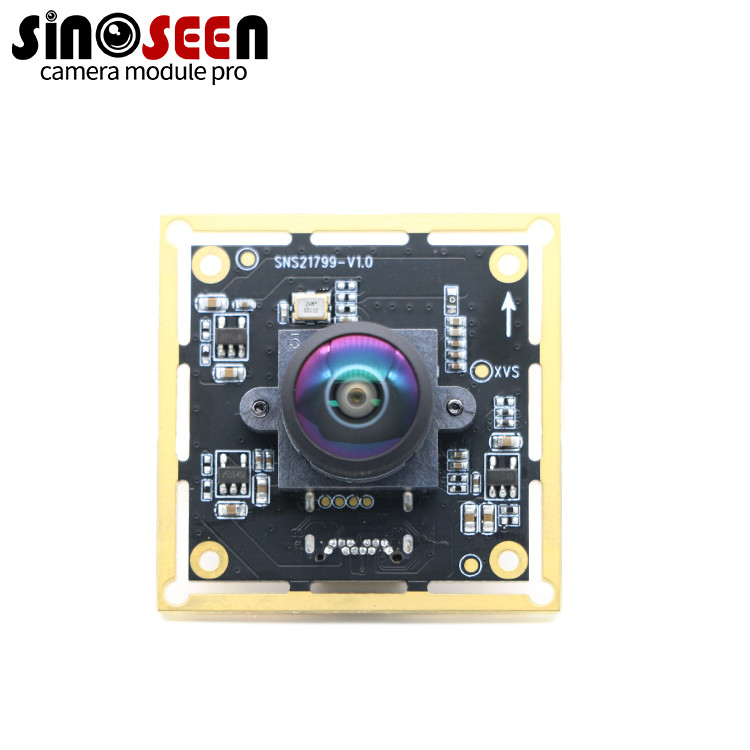Drones with Thermal Cameras: An Engineer's Guide to Unseen Perception & Industry Innovation
In the dynamic world of embedded vision, a system's ability to accurately perceive its environment directly shapes its intelligence and effectiveness. While traditional visible-light cameras are widely adopted, their limitations become glaringly obvious in challenging conditions like low light, dense smoke, dust, or even complete darkness. This very demand for enhanced perception has driven the emergence of drones with thermal cameras, effectively opening up entirely new dimensions of sensing for engineers. These aerial platforms are quickly becoming indispensable tools, ushering in innovation across numerous industries. They go beyond the capabilities of human eyes and standard optical sensors, capturing infrared radiation to reveal temperature differences and hidden anomalies. This capability empowers a vast array of applications, from critical industrial inspections to vital public safety operations. The deep integration of thermal imaging technology with drone platforms unquestionably represents a significant leap forward in intelligent sensing, demanding highly precise data acquisition and robust analytical methods.
The Convergence of Drones and Thermal Imaging Cameras: Navigating the Forefront of Technological Revolution
At its core, a drone integrated with a thermal imaging sensor is an advanced extension of multispectral imaging, applied to an aerial platform. It works by harnessing the infrared energy emitted by objects, transforming these otherwise invisible temperature variations into a clear "thermal view." This holds true whether it's the brightest day or the darkest night. For applications demanding 24/7 operation, rapid deployment, and the ability to cover expansive areas, this represents a truly transformative technological advancement. For embedded vision engineers, a primary focus lies in figuring out how to efficiently process and analyze these voluminous thermal data streams, translating raw information into actionable intelligence.
This powerful technological convergence hasn't just dramatically boosted data collection efficiency; more importantly, it has provided tangible solutions for many long-standing industry pain points. Take, for instance, traditional nighttime power line inspections: these were inherently hazardous and notoriously inefficient for field personnel. Now, a thermal imaging drone can safely pinpoint overheating points or potential electrical faults even after dark, significantly enhancing both operational safety and overall productivity. This is about making the unseen visible and the dangerous manageable.
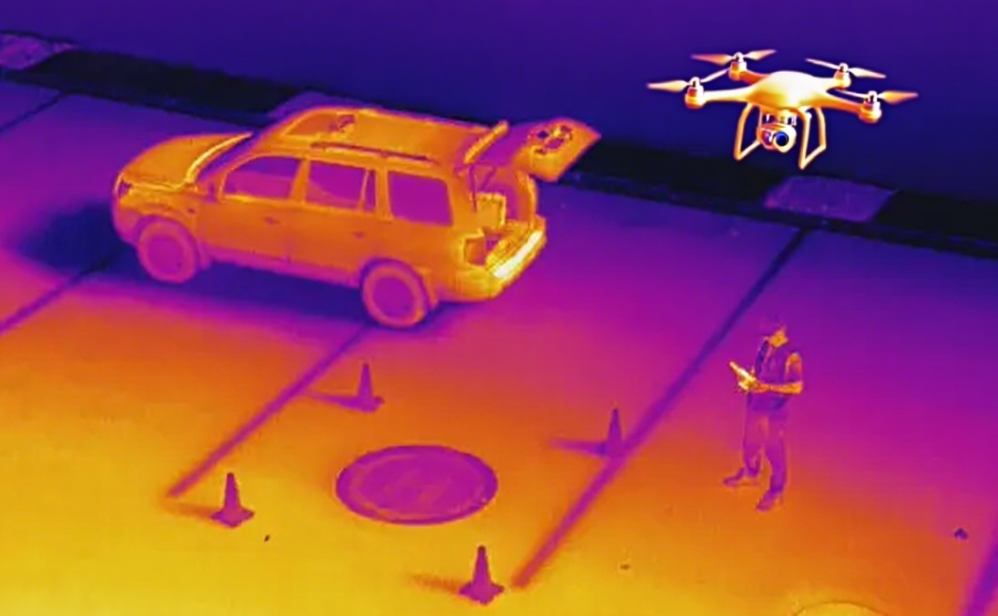
Drones with Night Vision and Thermal Cameras: Conquering All-Weather Perception Challenges
The term "drones with night vision and thermal cameras" describes one of the most sophisticated configurations in modern drone vision systems. It ingeniously combines low-light or even active infrared night vision capabilities with thermal imaging, ensuring that valuable visual information can be acquired under virtually any lighting condition—be it the dim glow of dawn, the pitch-black of midnight, or even a smoke-filled disaster scene. For critical missions like search and rescue, border surveillance, wildlife monitoring, and specialized military or security applications that demand robust, all-weather situational awareness, such a dual-modality system is absolutely essential. For instance, in nighttime search and rescue operations, a thermal drone can swiftly locate individuals obscured by foliage or moving through darkness, while the added night vision simultaneously provides richer scene details and environmental context, enhancing the rescue team's understanding.
Engineers designing these advanced systems must deeply explore and optimize multi-sensor data fusion algorithms to maximize the utility of every piece of captured information. Concurrently, crucial considerations include how to effectively manage power consumption, ensure stable and high-speed data transmission, and perform real-time hotspot and anomaly analysis directly on the drone's edge computing unit. These are significant technical hurdles in today's embedded vision landscape. According to a 2023 report by MarketsandMarkets, the global commercial drone market is projected to expand significantly, with market size growing from $34.4 billion to $58.4 billion by 2028. Drones equipped with multispectral and thermal imaging capabilities are expected to capture a substantial portion of this growth, further underscoring the immense market potential and strategic importance of drones with night vision and thermal cameras.
Drones with Thermal Cameras: Deep Dive into Market Applications & Real-World Case Studies
Today's market offers a diverse range of drones with thermal cameras for sale, and they've already demonstrated irreplaceable value across countless industries, solving numerous practical problems for users. In the critical realm of power and infrastructure maintenance, for example, during routine inspections of high-voltage transmission lines, a thermal imaging UAV can precisely detect subtle issues like overheating equipment or damaged insulation—problems often imperceptible to the naked eye or standard visible-light cameras—thereby effectively preventing major accidents and power outages. Data from leading utility providers indicates that implementing drone-based thermal imaging inspection technology can reduce the time to detect equipment faults by over 80% on average, drastically improving operational efficiency and safety across the grid.
In fire and emergency response, an infrared thermal drone possesses the unique ability to penetrate dense smoke, accurately pinpointing fire sources, trapped individuals, and potential ignitable materials. This significantly boosts rescue efficiency and informs more scientific decision-making. Research by the National Fire Protection Association (NFPA) explicitly states that drones equipped with thermal imaging systems enhance situational awareness at fire scenes by at least 50% when compared to traditional manual reconnaissance methods, directly contributing to saving countless lives. Beyond this, in precision agriculture, agricultural thermal drones can monitor crop health, identifying early signs of disease or pest infestations. In the construction and real estate sectors, they're widely employed to detect building insulation deficiencies, pinpoint roof leaks, and identify areas of energy loss. For embedded vision engineers, a deep understanding of these specific market demands is crucial for developing more tailored and efficient image processing algorithms and data analytics tools that transform raw thermal data into truly actionable and commercially valuable insights.
Adding a Thermal Camera to Your Drone: Exploring Modular and Flexible Integration Options
To address the common inquiry, "Can I add a thermal camera to my drone?" the answer is a resounding yes, and there are several distinct technical pathways available. This typically boils down to two main scenarios: either directly purchasing a professional-grade drone that comes with a pre-integrated, high-precision thermal imaging system (such as DJI's Mavic 3T or Matrice series, offering out-of-the-box high-performance solutions); or, for those who already own a drone, opting to integrate an external thermal payload or a standalone camera module. For the latter, embedded vision engineers undertaking such a project must meticulously evaluate the chosen thermal imager module's size, weight, power consumption, and, critically, its compatibility with the existing drone's flight controller and video transmission system.
The market now offers a diverse range of drone thermal payloads, spanning from independent USB or MIPI interface camera modules (ideal for deep, custom integrations) to professional gimbal-stabilized pods that include integrated thermal sensors, video transmission, and control systems (like the FLIR Vue series, FLIR Hadron, or DJI Zenmuse H20T). When selecting, engineers must prioritize the thermal sensor's resolution, its thermal sensitivity (NETD)—ideally below 50mK for superior contrast and fine temperature differentiation—the image frame rate, and whether it supports radiometric capabilities. This last feature is vital for applications requiring precise temperature analysis and data calibration. Furthermore, the compatibility of the thermal module with the drone's existing interfaces (such as PWM, UART, CAN, or USB) and the bandwidth of the data link (to support real-time transmission of high-resolution thermal imagery) are paramount factors determining successful integration and efficient operation. This capability for modularity and flexible integration significantly broadens the application scope of existing drone fleets, allowing more users to gain powerful thermal sensing capabilities in a more economical and adaptable manner.
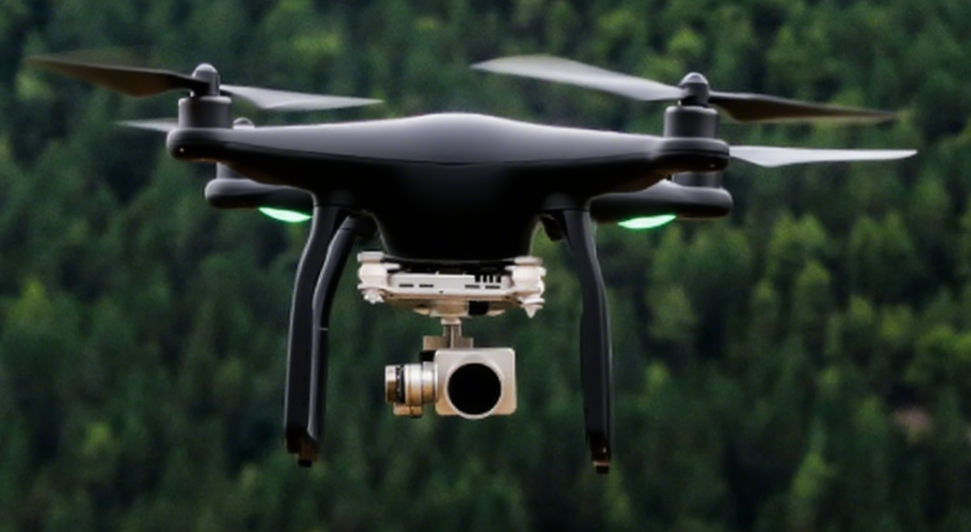
Challenges and Limitless Opportunities for Embedded Vision Engineers
While drones with thermal cameras present immense promise, embedded vision engineers still encounter multiple technical challenges in their practical deployment and algorithmic development. First up is thermal imaging data processing and storage: High-resolution, high-frame-rate radiometric thermal data can be voluminous. This demands robust edge computing capabilities and optimized storage solutions. Figuring out how to efficiently compress, transmit, and ensure the real-time availability of terabytes of this data is crucial for many demanding applications. Second is intelligent algorithm development: Given the unique characteristics of thermal images (e.g., inherently lower texture, higher noise), creating accurate algorithms for target detection, tracking, anomaly recognition, and classification, while effectively mitigating environmental interferences (like solar reflections, background temperature variations, or smoke occlusion), remains a significant technical hurdle. Currently, deep learning algorithms primarily optimized for visible-light images often exhibit limited direct transferability to thermal images, underscoring the need for dedicated innovation and specific optimization tailored to thermal data characteristics.
Furthermore, multi-sensor data fusion is another complex yet highly promising frontier. It requires effectively combining thermal imaging data with information from visible light cameras, LiDAR (Light Detection and Ranging) systems, and GNSS (Global Navigation Satellite System) to construct more comprehensive and precise 3D environmental models and enhance overall situational awareness. Achieving precise temporal synchronization, accurate spatial registration, and truly complementary information enhancement across these disparate sensor types is key to boosting the overall intelligence of these systems. For example, accurately correlating a hotspot identified in a thermal image with a specific physical object in a visible-light image (like a worn bearing on machinery or a section of a faulty solar panel) provides far more intuitive and actionable intelligence. However, it's precisely within these seemingly daunting challenges that immense opportunities lie. Mastering thermal imaging data processing and analysis techniques, and developing innovative multi-modal vision algorithms, will undoubtedly position embedded vision engineers at the forefront of the intelligent drone and AIoT (Artificial Intelligence of Things) sectors, continually pushing the industry's technological boundaries.
Conclusion: Drone with Thermal Camera, A Core Pillar of Intelligent Sensing and Future Trends
In summary, the drone with thermal camera technology is profoundly reshaping how we perceive the world and our environment, delivering unprecedented gains in efficiency and significant improvements in safety across a multitude of industries. It successfully addresses numerous pain points that traditional visible-light technology simply cannot resolve, such as effective all-weather operation, penetration through complex environments (like dense smoke and complete darkness), and precise temperature anomaly detection. Whether enterprises opt to acquire professional-grade UAVs with advanced thermal imaging systems already integrated, or choose to upgrade their existing fleets through a drone thermal camera modification solution, this technology offers expansive innovative space and substantial career opportunities for embedded vision engineers. By diving deeper into the research and practical application of drones with thermal cameras, we can collaboratively build more intelligent, reliable, and efficient sensing systems, thereby powerfully driving the digital transformation and intelligent upgrade of various sectors, and ushering in a new era of advanced smart sensing.
Deepen Your Thermal Imaging Drone Expertise and Seize Industry Opportunities
As a professional deeply invested in the embedded vision field, gaining a thorough understanding and mastery of thermal imaging drone technology and its latest trends is absolutely crucial for your career growth. We strongly encourage you to actively explore the most cutting-edge thermal camera modules, delve into the newest data processing frameworks, and utilize available Software Development Kits (SDKs). Engage actively in relevant technical seminars and professional forums to exchange invaluable experiences with your peers and broaden your professional perspective. If you have any further questions or specific requirements regarding detailed integration solutions for infrared drones, advanced radiometric thermal data analysis methods, or customized solutions for specific industries (such as power utilities, firefighting, or security), please don't hesitate to reach out to specialized camera module suppliers or experienced drone system integrators. Take decisive action now to embark on your innovative journey in the realm of drones with thermal cameras, and let's collectively shape the future of intelligent sensing!
For relevant articles about infrared cameras, you can refer to our previous resources:
- What is an infrared filter? How does it work?
- The eye of a camera: near-infrared and its infinite field of view
- Near-infrared camera: What is it? How does it work?
Sinoseen's infrared camera module
As a Chinese manufacturer with years of experience in customizing camera modules, Sinoseen supports the customization of multi-interface and multi-functional camera modules, providing users with one-stop visual application solutions. Before this, we have provided customized solutions for infrared camera modules of unmanned aerial vehicles for many customers and received unanimous praise from them. If your project also has such requirements, please feel free to contact us at any time!

 EN
EN
 AR
AR
 DA
DA
 NL
NL
 FI
FI
 FR
FR
 DE
DE
 EL
EL
 HI
HI
 IT
IT
 JA
JA
 KO
KO
 NO
NO
 PL
PL
 PT
PT
 RO
RO
 RU
RU
 ES
ES
 SV
SV
 TL
TL
 IW
IW
 ID
ID
 SR
SR
 VI
VI
 HU
HU
 TH
TH
 TR
TR
 FA
FA
 MS
MS
 IS
IS
 AZ
AZ
 UR
UR
 BN
BN
 HA
HA
 LO
LO
 MR
MR
 MN
MN
 PA
PA
 MY
MY
 SD
SD





